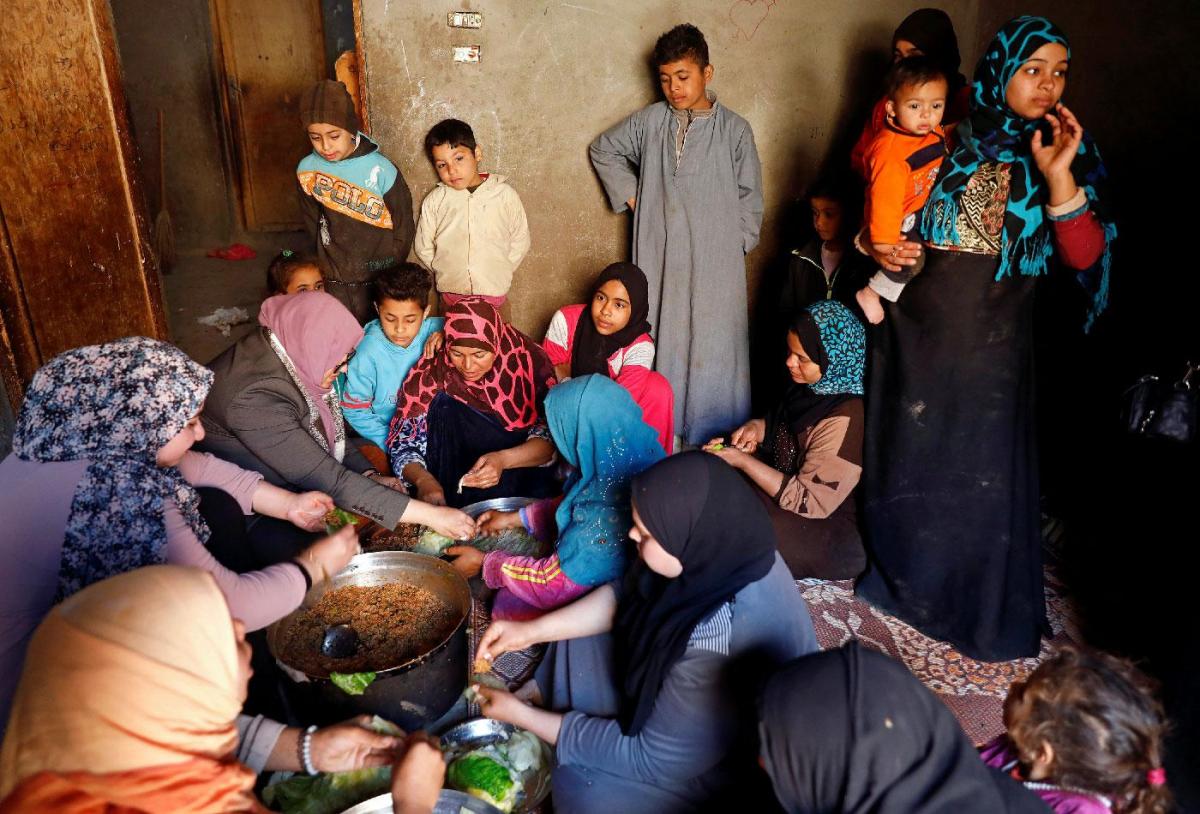The North African country retains its position as the most populous Arab nation and Africa’s most populous country behind Ethiopia and Nigeria. Already plagued with energy, water and wheat shortages, overcrowded schools and hospitals, as well as dwindling foreign currency reserves and high unemployment, a population growth rate of at 2.5 million people per year is a crisis of potentially epic proportions. At the current rate, Egypt’s population will increase by 70 million by 2050, adding pressure to an economy already reeling from the political and security turmoil since the 2011 uprising that toppled former president Hosni Mubarak. The government sees the population boom as a threat to its economic reform plans. Every year, 800,000 young Egyptians enter the labour market, where unemployment is officially 10 percent. To create enough jobs, this would require 7.5 percent growth in gross domestic product (GDP), compared with the government's forecast of up to 5.9 percent for the current fiscal year.
While many countries are struggling with rising populations, in Egypt the pressures are compounded by the fact that 97 percent of its people live on just 8 percent of its territory, crowded along the Nile valley and Nile Delta, with smaller numbers along the Mediterranean and Red Sea coasts. In Cairo, a megalopolis of nearly 20 million inhabitants, a population density is around 50,000 inhabitants per square kilometer, or nearly times that of London. President Abdel Fattah al-Sissi even regards the population crisis “a challenge as critical as that of terrorism.”
“TWO IS ENOUGH”
Last month, the government ceased to provide financial support to a family after their second child as part of the government’s first family-planning campaign aiming to challenge traditions of large families in rural Egypt. The programme, which began in 2018, targets more than 1.1 million poor families with up to three children and comprises a poster campaign as well as growing a network of mobile and fixed family planning clinics across Egypt handing out contraceptives. Posters covering the walls of Egypt’s metro show an Egyptian 50-pound note, worth about £2.20, torn into five. “Would you rather divide this into five, or into two?” is asks. Mothers are invited to seminars with preachers who say that Islam allows family planning, and doctors who answer questions. The aim is to reduce the fertility rate from 3.5 children per woman to 2.4 by 2030. Meeting that target would mean 8 million fewer births over the next decade.
Decades ago, Egypt had a family-planning programme supported by the US. The fertility rate fell from 5.6 children per woman in 1976 to 3.0 in 2008 while the use of contraceptives went up from 18.8 percent to 60.3 percent. Large amounts of contraceptives were made available and advertisements increased demand for birth control. But because Egypt was relying on donor support, when that assistance went away, family planning was neglected. In the six years between Mubarak’s forced departure during the Arab Spring and al-Sissi's initiative, family planning projects were not well funded, and the birthrate started rising. By 2014, the fertility rate had gone back up to 3.5. The US is supporting family planning again, providing more than $19 million for the five-year project ending in 2022 and $4 million for a smaller private sector project ending in 2020. Those amounts are significantly lower than the $371 million the US spent on family planning in Egypt between 1976 and 2008.

LESSONS FROM BANGLADESH
Bangladesh is particularly interesting for Egypt because of a similar religious context and a history of the same societal and health services challenges. A specter of doom was created around Bangladesh at its birth in 1971, when it earned the epithet of “basket case” from Henry Kissinger. But the Muslim-majority country – home to over 160 million people - made remarkable strides in reducing its fertility rate over the past five decades. By halving its fertility rate from a high of 6.3 children per woman between 1971 and 2004, Bangladesh holds lessons for both high fertility countries and for those who foretell a bleak future for those countries.
“Bangladesh has well-developed practices of pluralism, community engagement and multi-sectoral collaboration, which have helped make its Family Planning program and its Population Policy a success. The country has experienced a dramatic decline in fertility and mortality rates. The government has placed women at the center of the development agenda. It worked with local non-governmental organizations that helped the country achieve success in family planning and address population challenges,” said World Bank Country Director Qimiao Fan.
Since it became an independent nation in the early 70s, Bangladesh has been implementing family planning programs, in an attempt to keep a check on rapid population growth. With the help of foreign and domestic donors, the poor South Asian country adopted a program that involved reaching out to village women at the grassroots level. This included a door-step delivery of contraceptives to women who had traditionally been in seclusion. Female health workers, specifically recruited and trained for the purpose, went house to house, educating women on the benefits of having a smaller family and distributing contraceptives. Although social and economic improvements have played a major role in increasing demand for contraception, the provision of services and information has been shown to have had an independent effect on attitudes and behavior. As a result, the use of contraception in Bangladesh rose from a mere 8 percent in 1975 to over 61 percent in 2011, according to the World Bank. The control over childbearing also improved both women’s health and the health of their children.
Furthermore, improved basic healthcare services also reduced the child mortality rate. This decline has contributed to a drop in the fertility rate, as if people think some of their children will die, they want to have several to make sure that some survive. However, if they expect them to live, they are more inclined to invest in their education to maximise their potential in life.
For example, Bangladesh introduced a successful immunisation program kept children healthier and their mothers freer. A total sanitation drive had salutary impact on health, hygiene and privacy. A drive against diarrhea was undertaken partly to control epidemics that followed extreme weather events like floods and cyclones.
And an increase in girls’ education meant that younger mothers were better able to care for themselves and their children, compared to previous generations. Education gives women more decision-making power about how many children to bear – and girls who go to school tend to get married later, which statistics show means that they are likely to have less children.
Experts believe that Bangladesh's media, particularly public broadcasters, also played an important role in raising public awareness of the benefits of having fewer children, by highlighting that it helps parents to take better care of their children as well as causes less of a financial burden.









